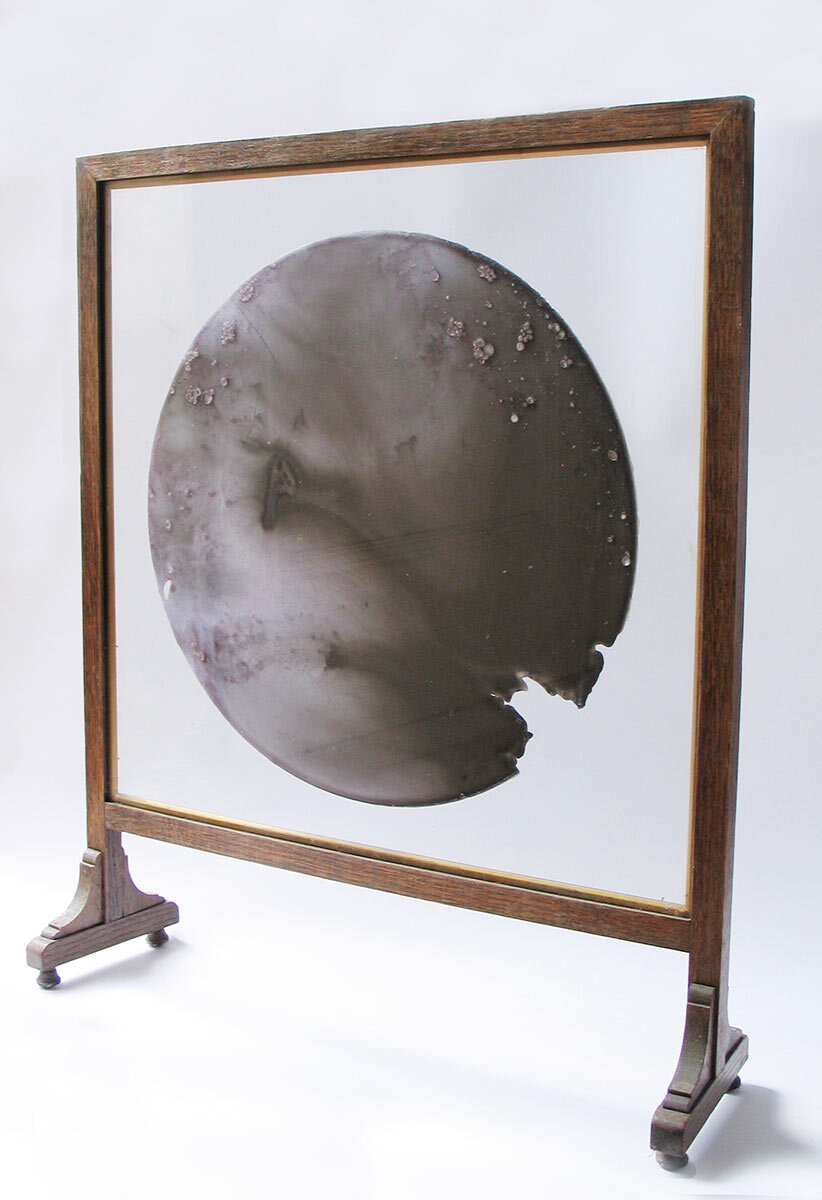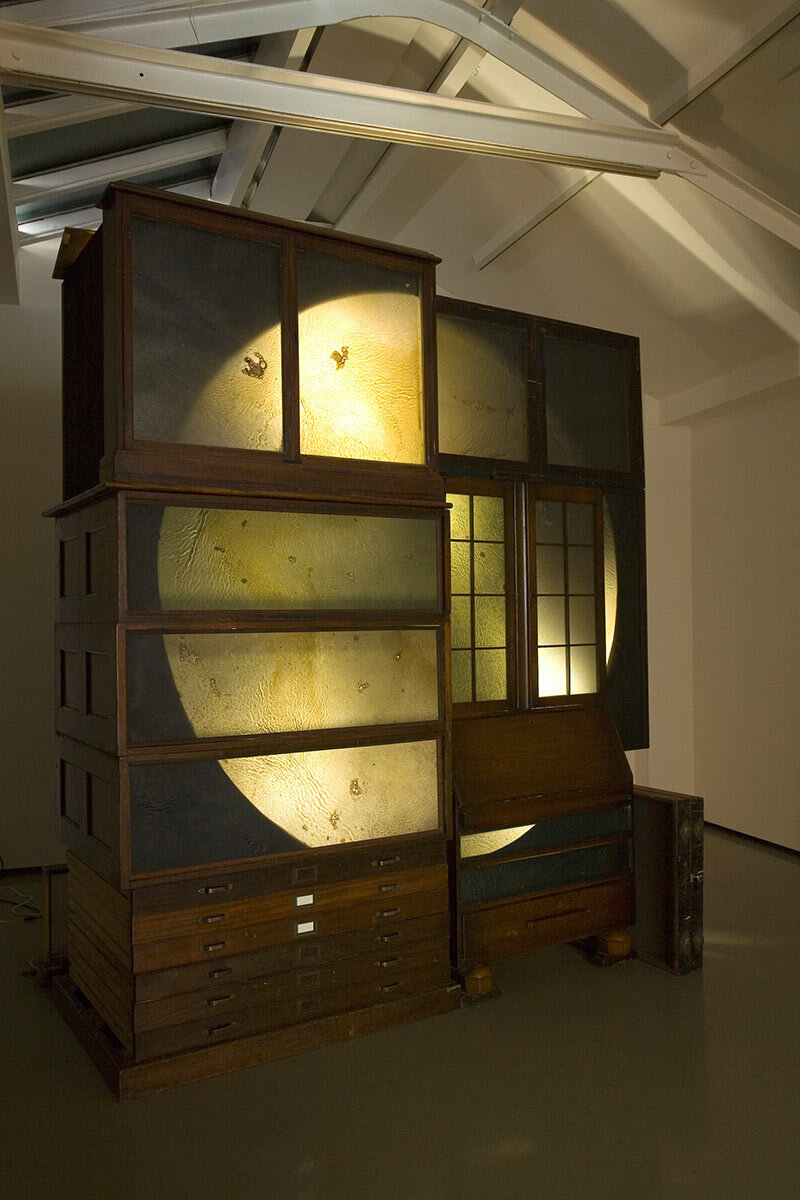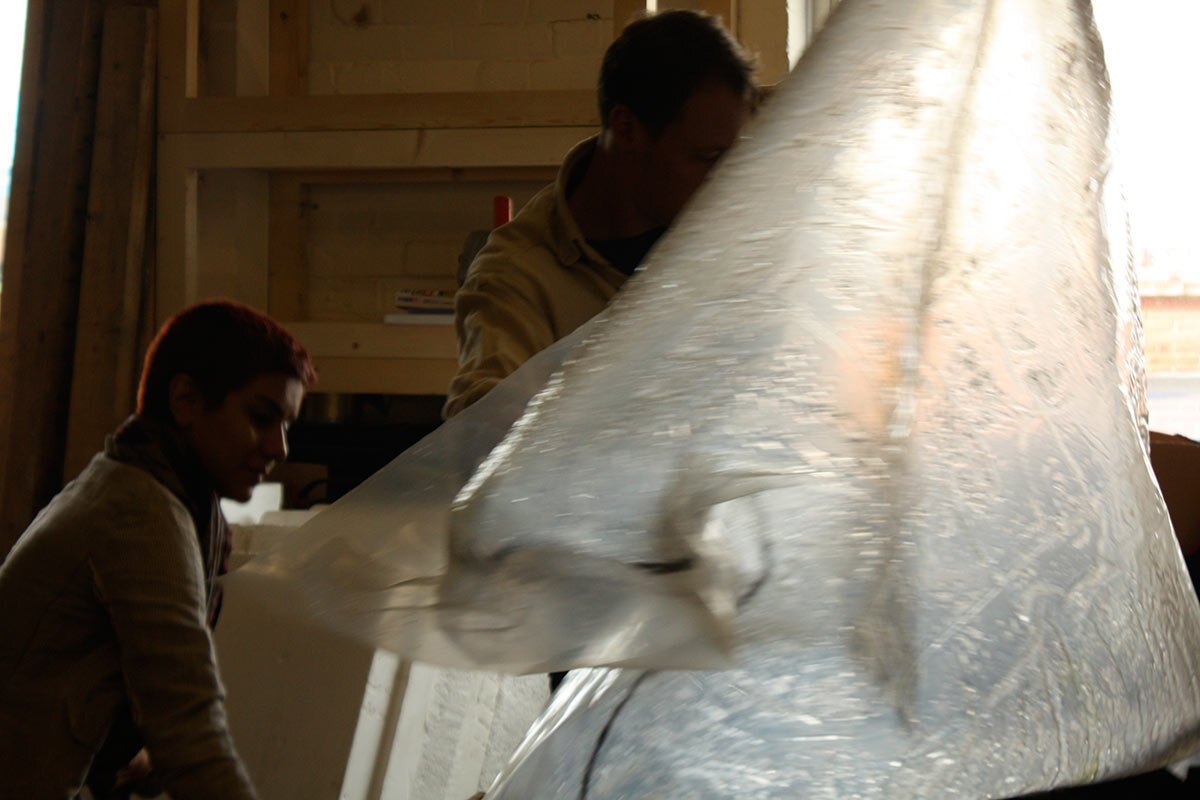
‘The real voyage of discovery consists not in seeking new landscapes, but in having new eyes’
Marcel Proust
Douglas White’s Dark Moon works are born of a creative, alchemical process involving wax, pigment and boiling water that produces mysterious, translucent, coagulated forms. It was a process the artist discovered by accident. Pouring away some boiling water, he unknowingly melted some fragments of wax that had collected at the bottom of a bucket. Returning a few hours later this melted wax had floated to the top where it had cooled and hardened into a paper-thin crust. On finding this unexpected waxy surface in the bucket, White very carefully lifted out the delicate form and held it to the light, and discovered his own private moon.
Having perfected the process, White has created the moons in various forms. Typically, they are presented as wall hung lightboxes, but have almost been embodied in free-standing sculptures and between glass panes, activated by natural light.
Characteristically for White’s work the Dark Moons sidestep the distinction between figuration and abstraction. They have a unique physical presence; an oddly elegant aesthetic quality and a mysterious capacity that hints at, but never fully reveals, a web of strong narrative meanings. They are like talismans left by a now distant and forgotten culture that still retain an aura of power and purpose.
NH
‘An engagement of similitudes. Resemblances. As Foucault suggests, “Up to the end of the sixteenth century, resemblance played a constructive role in the knowledge of Western culture. It was resemblance that largely guided exegesis and the interpretation of texts; it was resemblance that organized the play of symbols, made possible knowledge of things visible and invisible…”
And it is in this world that Douglas White finds the cardinal points of his aesthetic geography: the melted typographies of his Counsel (2005), the half-life of “snarling a seductive minimalist aggression” of vandalized recycling bins, or the longitudinal curvature of his Black Palm series, with their uncanny protrusions of wrought rubber and wire.
These are the remainders of place, removed from the context of their most plebian signification, and reconstituted in the gallery space are not mere mystical or naturalist allusion to the legacy of the objet trouvé, the banal beauty of the every day whose aura as a work of art derives not least from their address of an institutional critique. White’s artworks constitute envois into the potential material unknown and reveal to a self professed postmodern subject and society a simple fact: that the map is not the terrain. Indeed, by navigating space though a visual revaluation of substance and form, revealing one to be shocking divergent from the other, Douglas White creates a new cartography of similitudes instead of signifiers, of resemblance instead of representation, which reveal to the viewer just how represented the world actually is. That is, by presenting the inherent and material indeterminacy of the objects which he finds then (re)forms, the artist denudes the bright certainty of the known world. Even through vision, his artworks expose the blindness of the mind made up, and thereby reveal the pitfall of the postmodern: we are not as free as we think we are. ‘
Brooke Lynn McGowan













